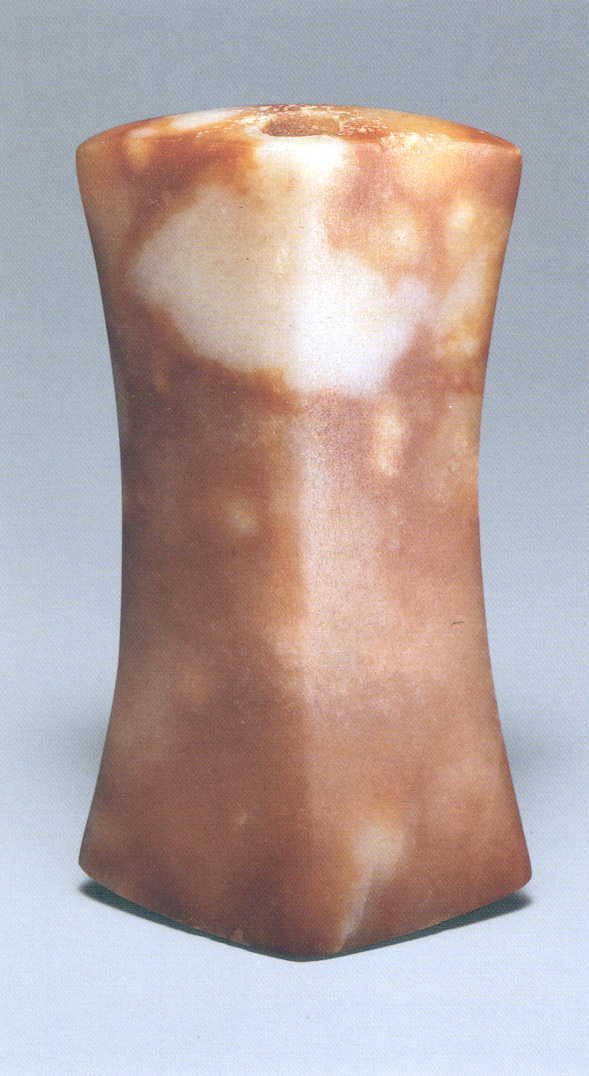Bannerstone
Not on view
Made between 6000 and 1000 BCE, carvings known as “bannerstones” are amongst the oldest finely sculpted lithics in the Americas. Indigenous North Americans created them from Michigan to the tip of Florida and from the Mississippi Valley over to the Atlantic coast. They carved and polished them with a peck and grind technology using a vast range of materials from soft sedimentary shale, to metamorphic slate or harder rock such as granite or quartz. Though bannerstones have been categorized by scholars into twenty-four different shapes, each one is a unique composition where sculptors appear to delight in the interplay of geologic characteristics in relation to the forms they sculpt. Using a hollow river reed, twisting it back and forth between their hands, adding water and sand to bite into the stone, they would drill a 1 to 2 centimeter hole down the center of the bannerstones for them to be hafted onto a shaft and hoisted or assembled on the body to be seen. Many bannerstones were found in areas at great distances from the geologic origin of the stone, revealing deep interest in stone texture and color and long distance travel and trade amongst ancient Indigenous sculptors. Of the thousands of bannerstones currently in public and private collections, many were found intentionally broken at the perforation where they are most fragile and then carefully placed in the ground. This breaking of bannerstones attests to Indigenous concepts about the materiality of stone and the act of breaking and of placing something of great value in the ground, not to be forgotten but to be remembered as active and alive.
Indigenous sculptors often chose to create bannerstones out of ferruginous quartz due to its high contrast of milky white intermixed with iron minerals in shades of deep saturated oranges, reds, or pinks. This particular bannerstone is larger than most and may have been singled out for special, perhaps ceremonial performances or display. Along the edges and perforation there are little to no signs of wear, further indicating that this was a unique and particular bannerstone similar to ceremonial axes or celts made by ancient artists of North and Central America including the Olmec and Maya. On one side of the stone Fulton Co Ill. is written in black on a white label. This refers to Fulton County in Illinois, presumably where this bannerstone was found. 2011.154.15 is written in red on one end above the perforation.
Anna Blume, Professor of the History of Art, Fashion Institute of Technology, State University of New York 2023
References and Further Reading
Knoblock, Byron. Bannerstones of the North American Indian. LaGrange: LeGrange: Bryon Knoblock, 1939.
Lutz, David L. The Archaic Bannerstone: Its Chronological History and Purpose From 6000 B.C. to 1000 B.C. Newburg: David L. Lutz, 2000.
Sassaman, Kenneth. “Craftworks of Structure.” The Eastern Archaic Historicized. New York: AltaMira Press, 2010, pp. 97-142.
Bannerstone Project. Fashion Institute of Technology, https://bannerstone.fitnyc.edu/
Due to rights restrictions, this image cannot be enlarged, viewed at full screen, or downloaded.
This artwork is meant to be viewed from right to left. Scroll left to view more.




